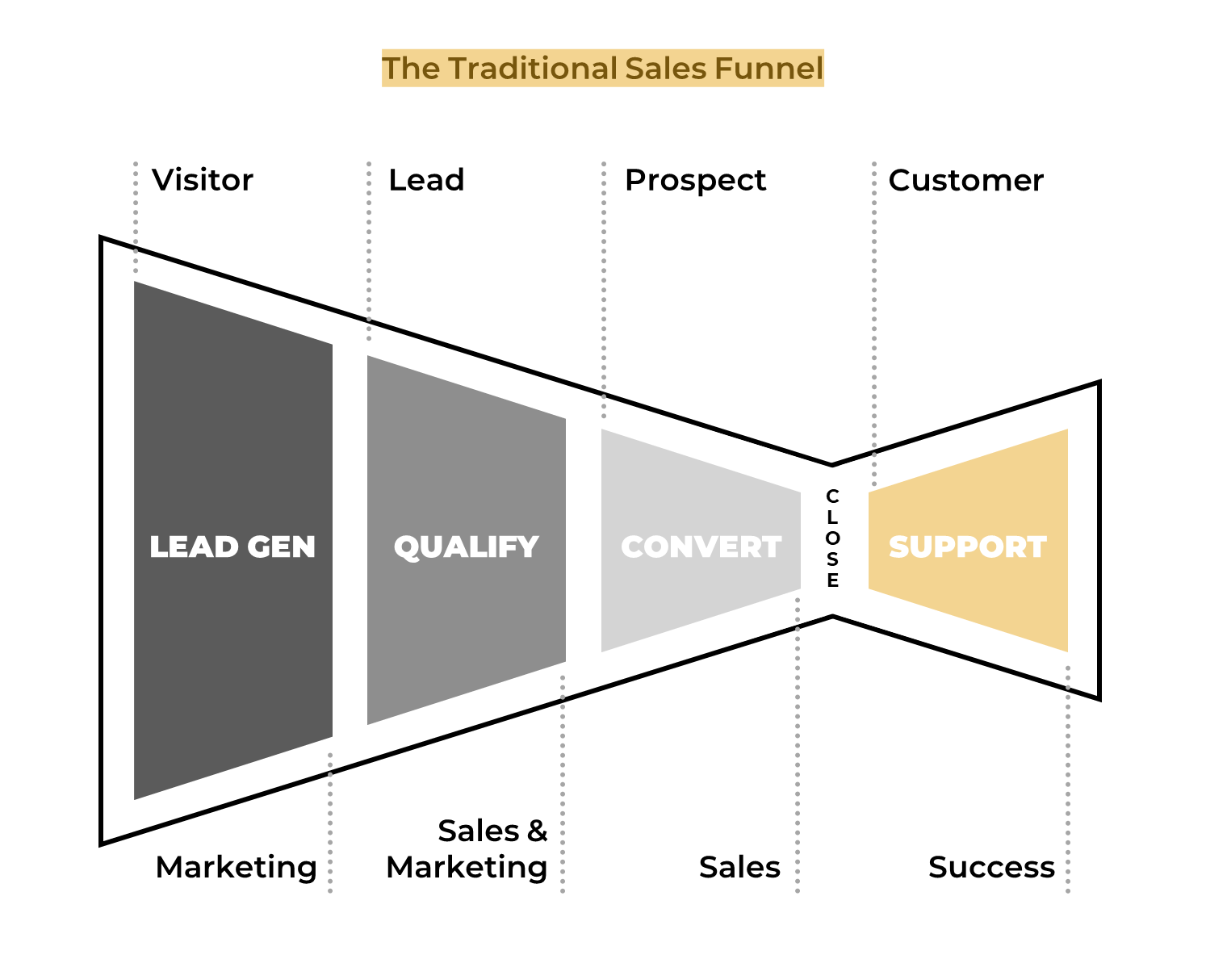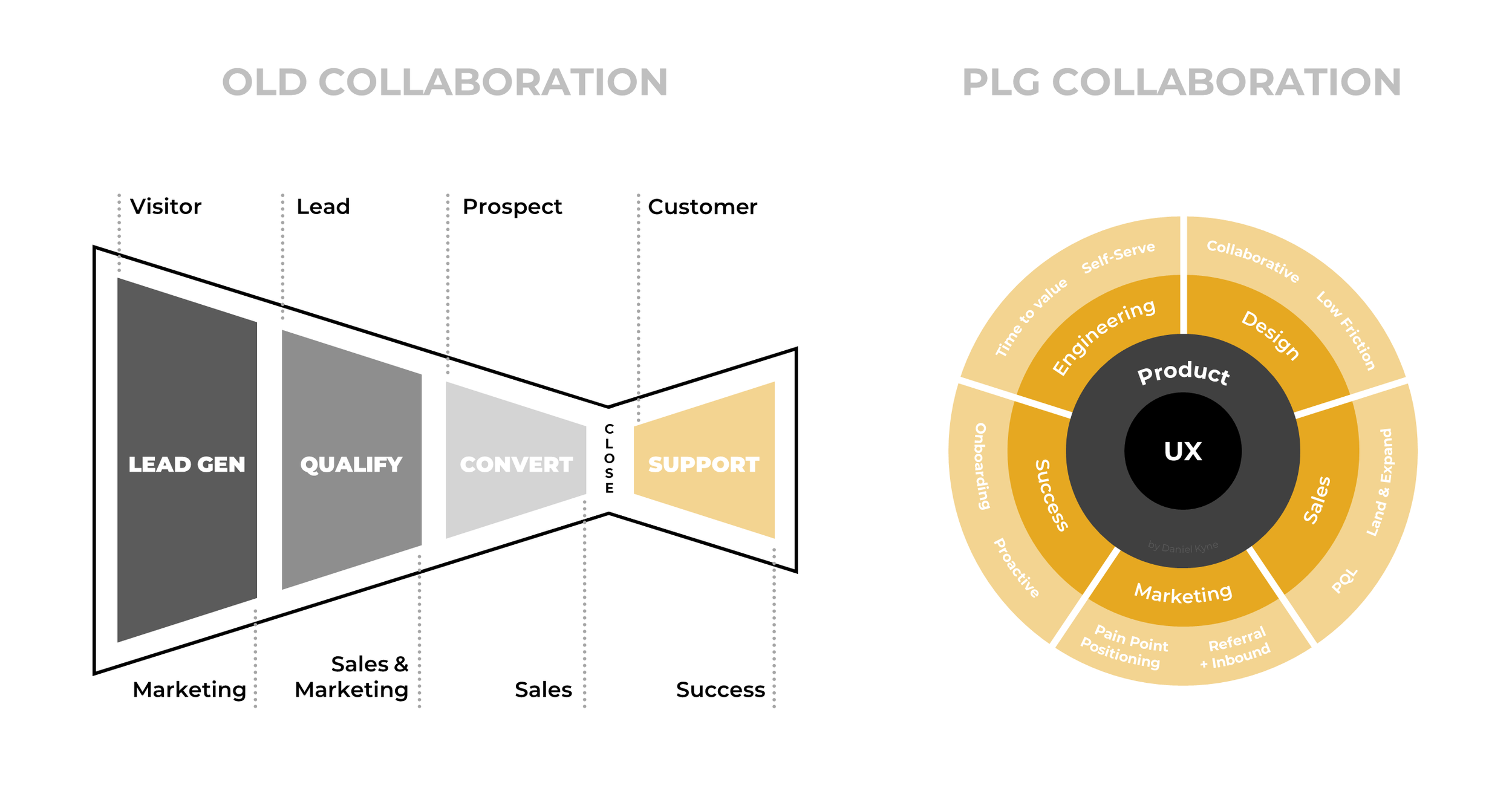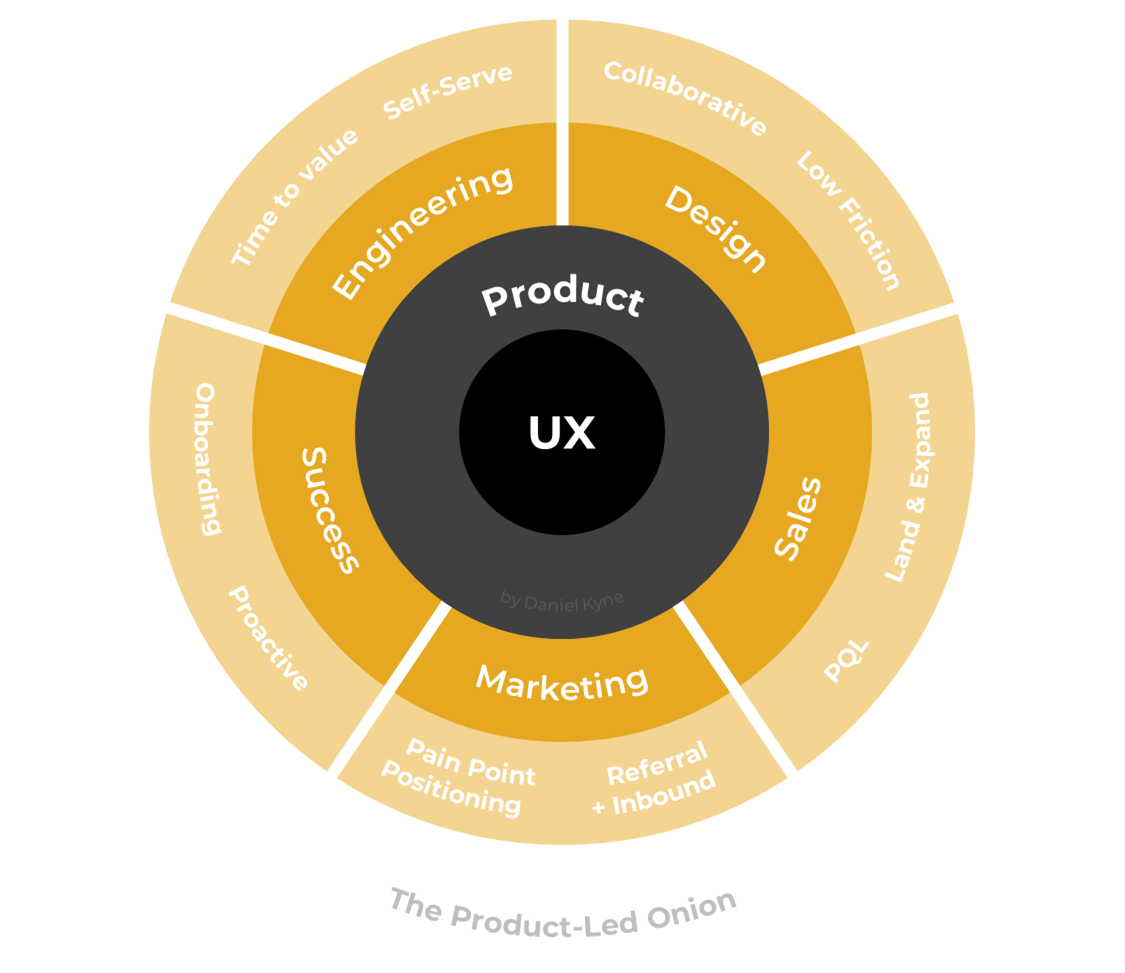The Guessing Gatekeeper: How product teams must adapt to survive the product-led world
Product Managers have been the middleman between internal company priorities and the needs of the customer for longer than terms like Scrum, Agile and Lean have been part of our vocabularies.
Since the late 2010s, however, the move towards self-service user experience design has called into question whether Product Managers can continue holding onto their middleman position — and for good reason.
This blog post is part two of a four-part series called Priority Analytics. Part one explored the history of product analytics to understand the factors that created the tools we use today and the impact that today’s trends will have on the product analytics tools of the coming decade. In part two, we’ll explore the impact that these trends have on the way that companies are designed and operate internally.
(If you haven’t read part one yet, it’s worth taking a few minutes to read it in a new tab before moving forward.)
One Channel To Rule Them All
Do you remember the first time you used Zoom?
Chances are you don’t because it was such a frictionless experience. You didn’t have to create an account or start a free trial — you just clicked the link in your calendar invite and seconds later you were using the product.
Zoom and many of the biggest startups of the past 5 years use what is called a ‘product-led growth’ strategy. Rather than a traditional funnel with a salesperson inviting you to a demo call before you get access to the product, your use of the Zoom product is what moves you along the journey from participant to user to customer.
The Traditional Sales Funnel
This approach is very different from the old sales-led or marketing-led funnels, where each function owned a step of the journey. Marketing was responsible for lead generation, together with the sales team they qualified leads, the sales team closed deals, which they handed to the activation-focused customer success team.
Because each team owned a clear leg of the customer journey, they typically enjoyed ownership over the channels they would use for their step of the funnel. Clear ownership of channels also meant these teams could easily measure their impact on the funnel by looking at how many leads they received would go on to successfully convert to the next step.
The Sales Bowtie
In part one of this series, we saw that closing a new sale is no longer the most important step in the sales funnel for a business with recurring revenue. Instead, the best recurring revenue businesses focus on retaining customers every time they are due to renew and then growing the value of an account between each renewal period. If you were to draw this model, it looks a lot less like a top-heavy sales funnel and much more like a land-and-expand bowtie:
^ We covered the logic behind The Sales Bowtie in Part 1 of the Priority Analytics series
Product-led startups tend to use a bottom-up strategy for customer acquisition, which means focusing on addressing the end-user’s needs rather than the C-Level exec’s profit/growth priorities.
Thinking back to the Zoom example, if we were to visualize the steps we went through to progress along each step of Zoom’s bottom-up sales bowtie, it would likely look something like this:
And this isn’t even unrealistic. I became a Zoom premium user in April 2020, almost 2 years ago, and I have never engaged with Zoom through any external channels; my entire experience has been delivered through self-service resources within the Zoom product.
Product-led companies are becoming monochannel
Moving every customer touchpoint to one channel forces functional teams to completely rethink their objectives, how they deliver on those objectives, and the data they use to inform decisions.
Rather than building a “Request a Demo” acquisition flow, how can a sales team educate new users without ever engaging directly with them? Rather than running ad campaigns to fill the top of the sales funnel, how can a marketing team incentivize referral amongst the existing userbase to catalyze viral growth? Rather than scheduling time-based check-in emails, how can a customer success team create contextual links to the right solutions at the exact moment a problem appears?
From the user’s perspective, they are engaging with one product, not a journey divided amongst different internal functions. To successfully implement a monochannel approach, every team must speak the same language. In the case of a bottom-up go-to-market strategy, that language must be end-user needs.
So we can see that product-led strategies force different functional teams to deliver their objectives through the same channel (product) using the same consistent language (end-user needs). Right now we’re looking at this from the perspective of the customer journey (sales bowtie). Let’s take a look at how this changes a company’s internal structures.
Cross-Functional Collaboration in Product-Led Organizations
Even though the channels that each functional team uses to deliver their objectives have changed, the teams themselves still carry the same overall responsibility in the product-led organization.
Sales teams are still responsible for conversion and account value growth, marketing teams are still responsible for generating new sign-ups, product teams are still responsible for understanding user needs and determining the product roadmap.
This is where things start to get a little tense.
There has always been friction between product management and sales teams, like the sales team requesting customized tools on an account-by-account basis or product managers being forced to prioritize features because they were promised in a sales agreement.
What has changed today, however, is that sales teams aren’t just trying to get Product Managers to agree to prioritize features so that they can close a new deal — they’re relying on Product Managers to prioritize the projects that sales teams can’t do their job effectively without.
This isn’t just the case for sales teams though. In this new product-led way of working, the product team’s control over the roadmap becomes the limiting factor for each team’s ability to successfully deliver their objectives.
Introducing The Guessing Gatekeeper
Teams deliver their objectives by changing the user’s experience of the product; The product team controls what is allowed to change the user experience; therefore the product team controls whether teams deliver on their objectives. However, this alone is not why the Product Manager’s authority is under threat in product-led companies.
If we look at the new objectives and metrics that inform functional teams in the product-led company, we can see that every team has a source of data informing their decisions.
^ The layered collaboration of a product-led organization (or Product-Led Onion, as I like to think of it).
A good product team balances what is important to the company (functional team objectives, ensuring important deals are won, meeting key product requirements) with what is important to the customer (addressing their most important needs, ensuring a consistent user experience, preventing confusion and overwhelm).
By maintaining a quality network throughout the company and through a clear strategy well-communicated by their leadership team, a good PM can stay connected to the priorities of the company.
Product managers are like car mechanics: They should be looking for ways to help their team run more smoothly, efficiently, and reliably—operating like a well-oiled machine. pic.twitter.com/PEvzOmljRO
— Lenny Rachitsky | lennysan.eth (@lennysan) November 27, 2021
In the old collaboration model, product managers could stay connected to the priorities of the customer through user interviews, focus groups, customer personas, and a good research repository.
These qualitative sources of data were fine in the old collaboration model where product teams informed the other functions with the ‘voice of the customer’. In the new collaboration model — from the perspective of the rest of the company — the product team dictates whether they hit their targets this quarter and they’re making their decisions based on a handful of unmeasurable quotes.
Digging into the data
In product-led companies, sales teams have moved from marketing-qualified leads to product-qualified leads. Customer success teams have moved from NPS scores to self-service activation rates. Marketing teams have moved from landing page conversion rate to viral coefficient K-Factors.
Meanwhile, product teams are stuck playing a guessing game without any relevant source of data to inform their decisions. According to the Product Management Festival Trends & Benchmarks Report 2020, the most common ways that agile companies make prioritization decisions are: prioritization frameworks (70%), product analytics (65%), next user decides (31%), ad hoc (25%) and reacting to competitors (22%). But these sources are all inherently flawed.
Prioritization frameworks, like RICE Scoring, simply convert internal assumptions and hunches into spreadsheet numbers so that they can be compared. This is not a big secret. The creator of the RICE Scoring framework (one of the top three most used prioritization frameworks) openly acknowledges that scoring each option this way can’t be considered robust but it’s currently the most passable method available to product teams.
"Choosing an impact number may seem unscientific. But remember the alternative: a tangled mess of gut feeling." — Seán McBride, creator of the RICE Scoring Framework.
Product analytics tools like Mixpanel and Amplitude can inform optimization, but when it comes to building completely new products or features, they just can’t offer anything actionable. I don’t even need to explain why the three reactionary signals — ’next user decides’, ‘ad hoc’, and ‘reacting to competitors’ — are all terrible ways to inform roadmap prioritization...
Informing The Guessing Gatekeeper
This dynamic between qual-driven product teams and quant-driven functional teams is not sustainable. If PMs want to retain control over the roadmap, they must bring better data to the decision-making table. So what should that data be? Let’s answer that question by looking at the jobs that prioritization frameworks like RICE Scoring fulfill for product teams.
Comparison
Product teams live in the world of trade-offs. Which project will have a greater impact on the company’s objectives? Which project will impact more users? Which segment of users is more important right now? How much effort will each one require?
Prioritization spreadsheets are translation tools for product teams. They enable Product Managers to take projects that impact entirely different users, metrics or objectives and translate them into a common language so that they can be compared.
By breaking each potential project down into a set of criteria, a prioritization spreadsheet can produce a single number for each one that allows them all to be directly compared by any member of the company in an instantly understandable way.
Credibility
Technology companies are a numbers-driven industry, but innovation always starts with qualitative roots. Many of the projects on a product roadmap are initially inspired by feature requests, customer quotes and user interviews.
As companies scale, the commercial impact of each new decision also grows. Larger companies mean more complex hierarchies which lead to increased accountability measures. While early-stage startups are built on personal relationships within a small team, scaling teams need more than friendship to be convinced to lend their scarce resources to any project.
Prioritization frameworks translate qualitative insights into quantitative stats that help product teams to effectively manage stakeholders within a company and better advocate their agenda cross-functionally. However, the assumption-based nature of prioritization spreadsheets also introduces the risk of PMs losing credibility if later data disprove the logic they used to generate their spreadsheet input.
Scale
Qualitative data is messy and overwhelming, even in small doses. Startups like Frame.io deal with over 160 Intercom support chats with users every single day. Grabbing meaningful quotes, organizing them in a manageable way, and accessing them when they’re needed most is a goliath task.
Prioritization spreadsheets, on the other hand, can translate an entire backlog of tickets — each with its own document full of user quotes — into an actionable click-to-sort list ready for sharing. The scalability and flexibility of a prioritization spreadsheet like RICE Scoring mean that it’s the perfect solution for everyone from solo founders to multinational product teams.
As community-led growth becomes an increasingly important defensibility moat and the move to web3 demands greater community participation, the need for scalable ways to take qualitative user input and convert it into actionable quantitative output will skyrocket in importance.
In fact, I believe that this last point on scalability and community participation is so important to the future of product management, I’ve dedicated part three of this four-part series to this topic. It’s the final deep-dive before tying all three sections together in a summary piece, explaining the need for Priority Analytics as a robust, repeatable, scalable source of data on end-user needs to power the next generation of technology companies.
—
Daniel is the Co-Founder and CEO of OpinionX, a free user research tool that helps product teams to discover and stack rank their users’ priorities by importance. Create a stack ranking project on OpinionX today for free.
Subscribe to The Full-Stack Researcher newsletter for more essays like this on the future of product management, user research and product analytics:








